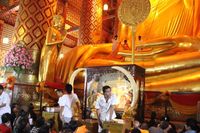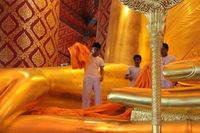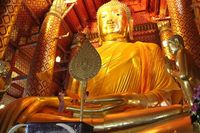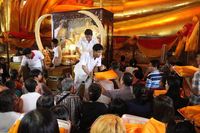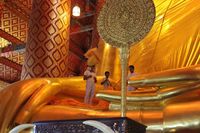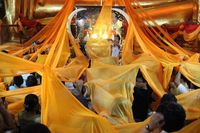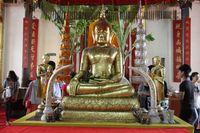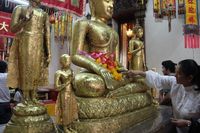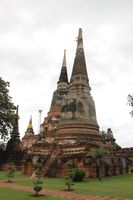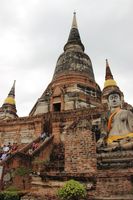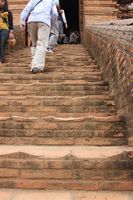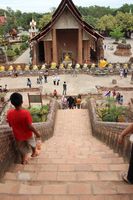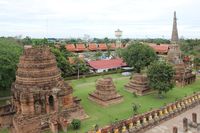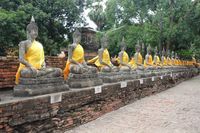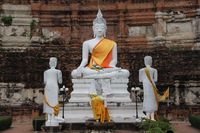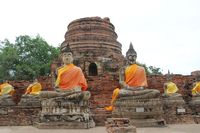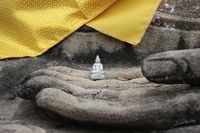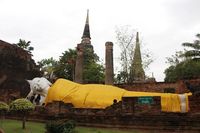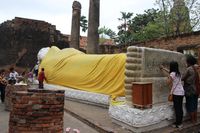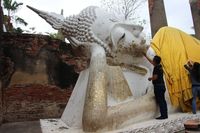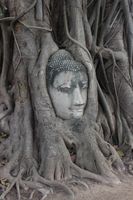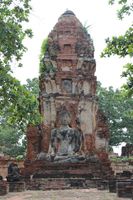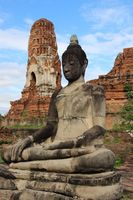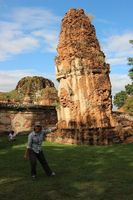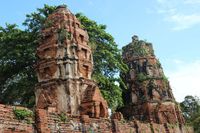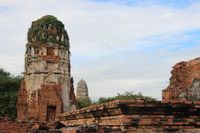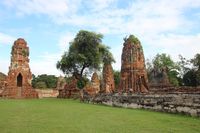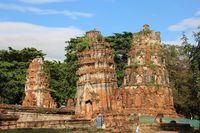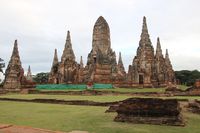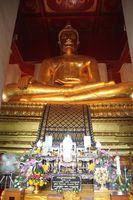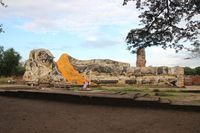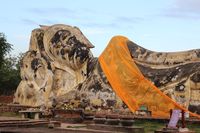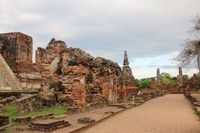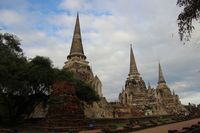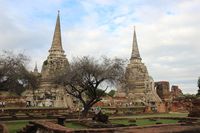Ayutthaya
Ayutthaya was founded in 1350 and remained the Siamese
capital for 417 years. The architecture is
a fascinating mix of Khmer (ancient Cambodian
style) and early Sukhothai style. Some cactus-shaped
obelisks, called prangs, denote Khmer influence
and look something like the famous towers
of Angkor Wat. The more pointed stupas are
ascribed to the Sukhothai influence.
Ayutthaya, the former Thai capital, in its heyday was
a city of more than a million people with
5,000 foreign traders and emissaries. It
was one of the biggest cities in the world.
During the 17th century, most foreign traders
and diplomats claimed Ayutthaya to be the
most illustrious and glittering city that
they had ever visited.
Today, the main island is an ensemble of
golden stupas and crumbling temples with
rows of headless Buddhas, removed during
the Burmese invasion. We cruised on the river circumnavigating
the island from where you can view more of
the many temples and the town life. In October
2013 there were severe floods and much of
Ayutthaya was under several metres of water.
Wat Mahathat – Over 600 years old, Wat Maha was
the heart and soul of the Ayutthaya people.
It was almost completely destroyed by the
Burmese during the Thai-Burmese War. There
is a Buddha head enshrined in the trees and
many of the stupas 'Chedi' look lean
at more of an angle than the tower of Pisa!
Wat Panan Cherng – The large seated Buddha seems too
big for the room. Built in A.D. 1325, this monastery is the
most revered by the inhabitants of Ayutthaya.
Several times during the day there is an
'offering' ceremony. People donate
to the temple by 'buying' a cloth,
which is then donated to the monks. The cloths
are thrown up helpers who drape them over
Buddha. When complete they are removed from
Buddha and passed over the congregation.
It will bring good luck for all those who
touch the cloth.
Wat Yai Chaimongkhon - Several large pagodas, built to celebrate
the victory of his single - handed combat
on the elephant's back during Ayutthaya
capital. There is also a large reclining
Buddha.
Wat Phra Mongkhan Bophit – A large bronze cast Buddha image,
built in the early Ayutthaya period. It is
one of Thailand’s largest Buddha images.
The image height is 12.45 metres and the
base is 4.5metres high, the lap of the image
is 9.55 metres wide. The restoration was
completed in 1957.
Royal Palace and Wat Phra Sri Sanphet - The Royal Palace was built in 1350 in the
reign of King Ramathibodi I and was inhabited
by successive kings for 98 years. Located
in the Grand Palace compound Wat Phra Sri
Sanphet was the largest temple in Ayuthaya,
and was used by many Kings.
Wat Lokayasutharam – A large 42 metre long reclining
Buddha image made of brick covered with plaster
and a group of ruined pillars out in the
open air.
Wat Chaiwatthanaram - one of Ayutthaya's best known temples,
constructed in 1630 by King Prasat Thong
as a memorial of his mother's residence
in that area. It has a central 35 metre high
prang with 4 smaller prangs. About halfway
up there are Steep stairs leading to hidden
entrances. The central platform is surrounded
by eight chedi shaped chapels which are connected
by a rectangular cross-shaped passage. It
was a royal temple and many princes and princesses
were cremated here.











